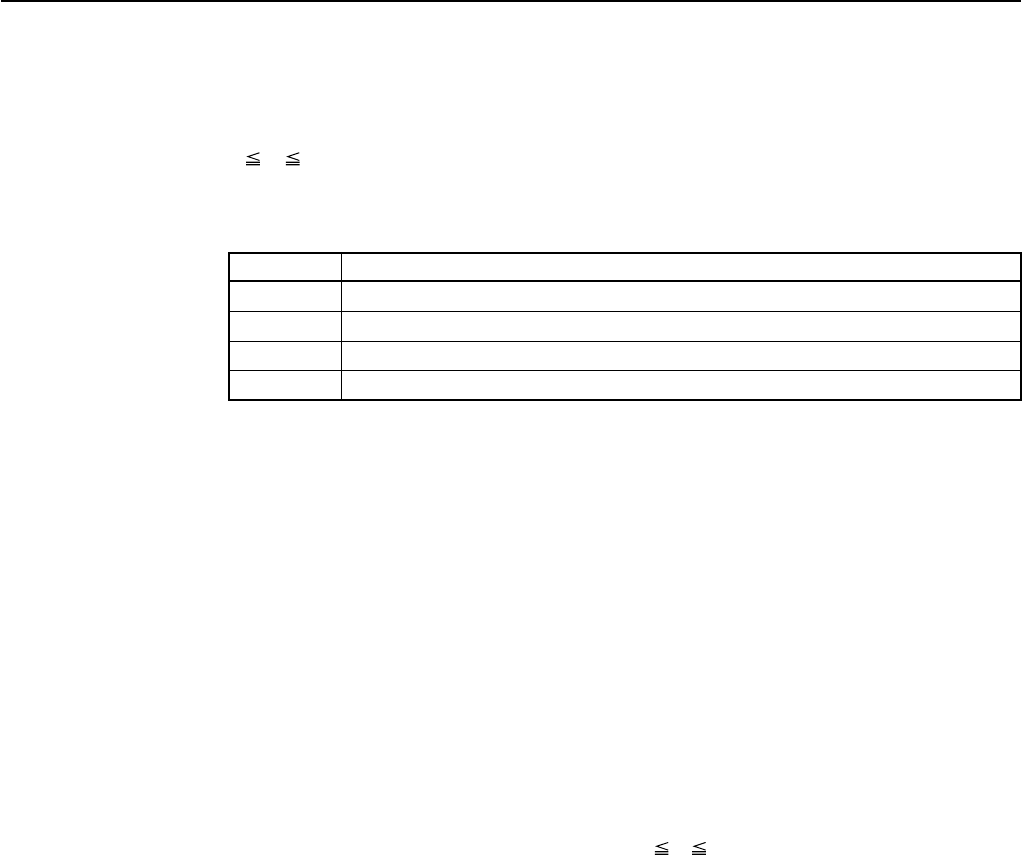
— 52 —
2.2.6 Status Commands
DLE EOT n
[Function] Sending status in real-time
[Code] <10>H<04>H<n>
[Range] 1 n 4
[Outline] Sends in real-time the status specified by “n”.
[Caution] • Each status represents the current status. It is 1 byte data.
• The status is transferred without checking whether the host is ready to receive or
busy.
• This command is executed even if the printer is in offline state, receive-buffer full
state, or error state.
• This command is dealt with when it is received.
• With serial interface specifications, this command is executed in offline state,
receiving buffer full state, and error state.
• With parallel interface specifications, this command cannot be executed while the
printer is in Busy state.
When memory SW1-3 is ON, the printer does not enter Busy state in the offline
state and error state.
• If ASB (Automatic Status Back) is enabled by GS a, it is necessary to discriminate
between the status due to ASB and the status due to this command.
• This command can be executed even if printer setting by ESC = is invalid.
• If another data string of <10>H<04>H<n> (1 n 4) is received, the printer acts the
same way as with this command. Therefore, the user should be reminded of this
fact.
[Example 1]
Suppose a command “ESC * m nL nH [d1 ... dk]”, where d1 = <10>H, d2 = <04>H,
d3 = <01>H.
The DLE EOT n command cannot be interleaved into the code string of another
command consisting of 2 bytes or more.
[Example 2]
If the printer sends DLE EOT 3 after the host has sent up to ESC 3 in its attempt to
send ESC 3 n, the printer handles the ESC 3 as ESC 3 <10>H. Thus, the user should
be cautious.
n Status
1 Printer status
2 Status caused by an offline condition
3 Status caused by an error
4 Continuous paper detector status


















